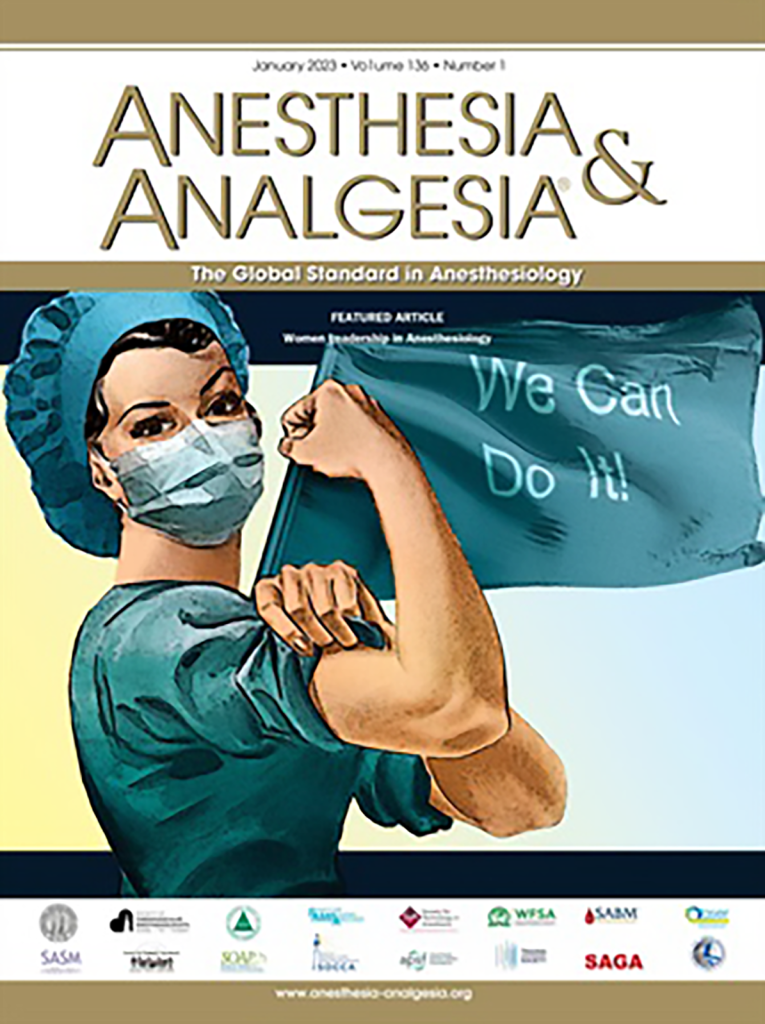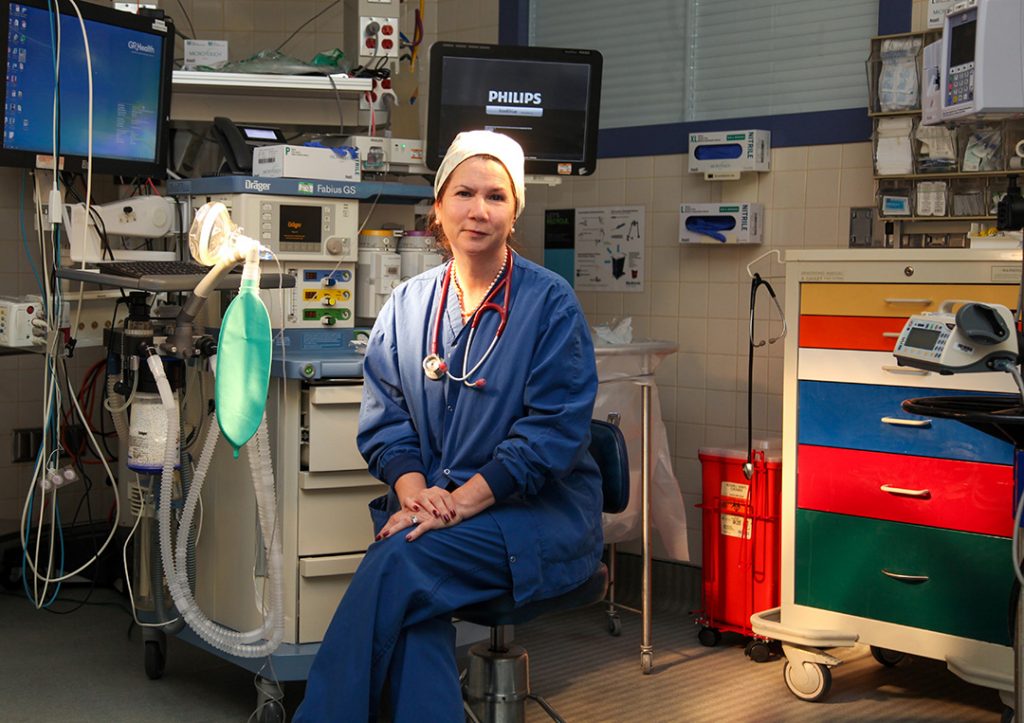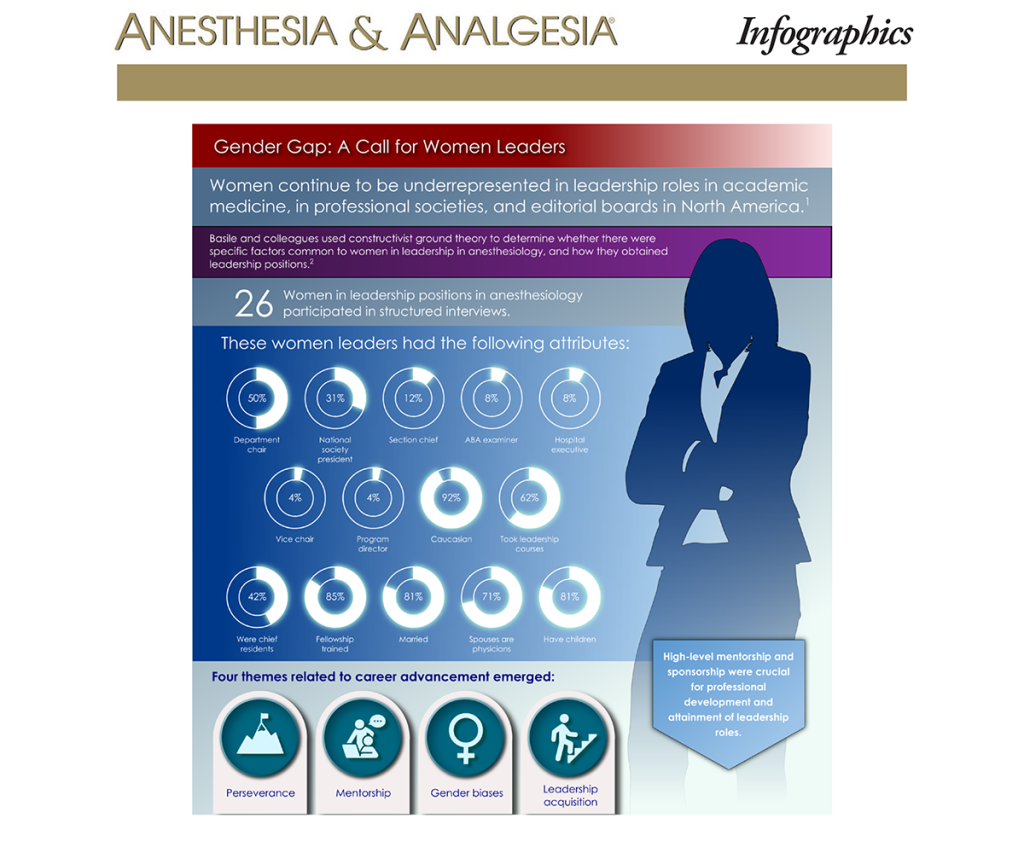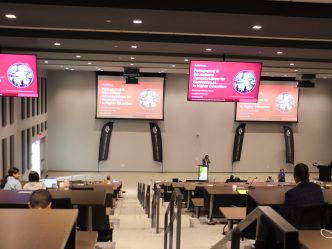A study performed by Augusta University researchers is featured on the cover of the January 2023 issue of Anesthesia and Analgesia.

The study, “Gender Gap: A Qualitative Study of Women and Leadership Acquisition in Anesthesiology,” was initiated in June 2020 by former AU associate professor and researcher Ellen Basile, DO.
Basile was assisted by Heather Byrd, MD, associate professor in the Department of Anesthesiology and Perioperative Medicine at the Medical College of Georgia at Augusta University; Melissa Powell-Williams, PhD, director of the Qualitative Research Lab at AU, professor in the Department of Social Sciences at Pamplin College of Arts, Humanities, and Social Sciences and an expert on qualitative studies; Javier Polania Gutierrez, MD, a CA1 resident at MCG; and Efrain Riveros-Perez, MD, associate professor in the Department of Anesthesiology and Perioperative Medicine.
One name that doesn’t appear in the credits but Basile said was just as instrumental in the study is Tynisia Ramsey, Basile’s office specialist while she was with AU. Basile compliments Ramsey for doing a lot of heavy lifting by transcribing hand-written notes from interviews, organizing the dates and times of the 26 interviews and organizing all the different pieces gathered from each subject.
“I really owe her a debt of gratitude for everything that she did to help with the project. she really did a significant amount to keep it all organized. There’s so much that was involved in these interviews. It was very overwhelming and she really helped keep things organized for me and I couldn’t have done it without her.”
Anesthesiology is one of many fields where the number of women in leadership positions trails that of their male counterparts. The qualitative study was aimed at understanding the paths women must take to be appointed to positions of power within the field of anesthesiology.
“All good research starts with a question and the question that we wanted to answer specifically was, how did these particular women achieve their leadership position?,” Basile said.
“Half of our participants were chairs of their department of academic anesthesiology programs. At least eight were at the time or had been presidents of national societies within the field of anesthesiology, and then we had a couple that were CEOS and COOs. So I wanted to know exactly what was the path for them to rise that high in our profession?”

The research team interviewed 26 women, including several in the top tier of the field of anesthesiology across the United States and Canada. All but one of the participants were full professors, having practiced over 10 years. The majority of the 26 women interviewed had a mentor, but half had what could be qualified as a high-value asset or mentor in powerful leadership positions.
As a sociologist and director of the Qualitative Research Lab, Powell-Williams was able to offer guidance on how to frame the interviews and then how to quantify what was shared.
“Even though I have no working knowledge of anesthesiology, I was able to help with this study because of the way gender is structured in our world,” Powell-Williams said.
“We were looking at individual experiences, but we looked at those individual experiences within the broader context of an institution. It’s a small sample of how individuals are navigating this experience in a gendered world. As a sociologist, it’s impossible not to link this to other fields, and I think one of the biggest takeaways is getting to the question of, how can we look at this more broadly?”

From the interviews, the research team was able to identify four common themes related to the career pathways of the 26 interviewees. It was clear that early-career, high-value mentorship and sponsorship were important to advancement.
Of the participants, 76% had early mentors and of those, 65% were considered high-value mentors, or someone defined as in a position of power or authority.
Along those same lines, one of the most noteworthy discoveries is the lack of mentorship and sponsorship, creating a barrier for women to rise to positions of power. Basile also pointed to well-circulated literature that details how much more difficult it can be for women to move through the ranks, with women being promoted in smaller percentages and on longer timelines.
“One of the things that we found is there are significant barriers for women throughout the professional world, and medicine is no different,” Basile said.
“There are a lot of barriers for women moving up: lack of mentorship, lack of sponsorship. In other words, going from instructor level to assistant to associate to professorship, it tends to take women significantly longer, and we’re not promoted in the same percentages as men are, and I feel it’ll take another couple of decades to get us where we need to be.”
 Augusta University
Augusta University




